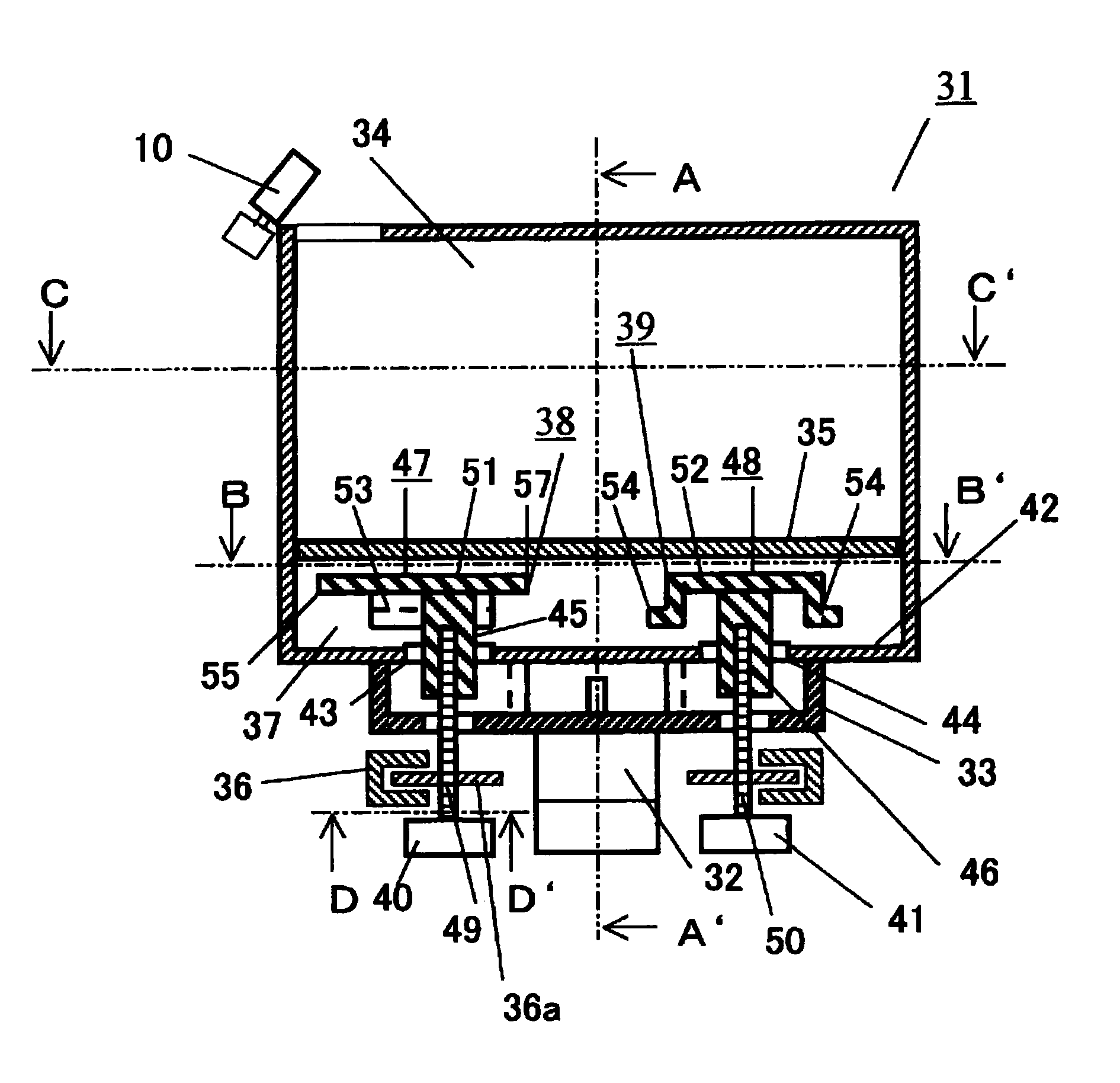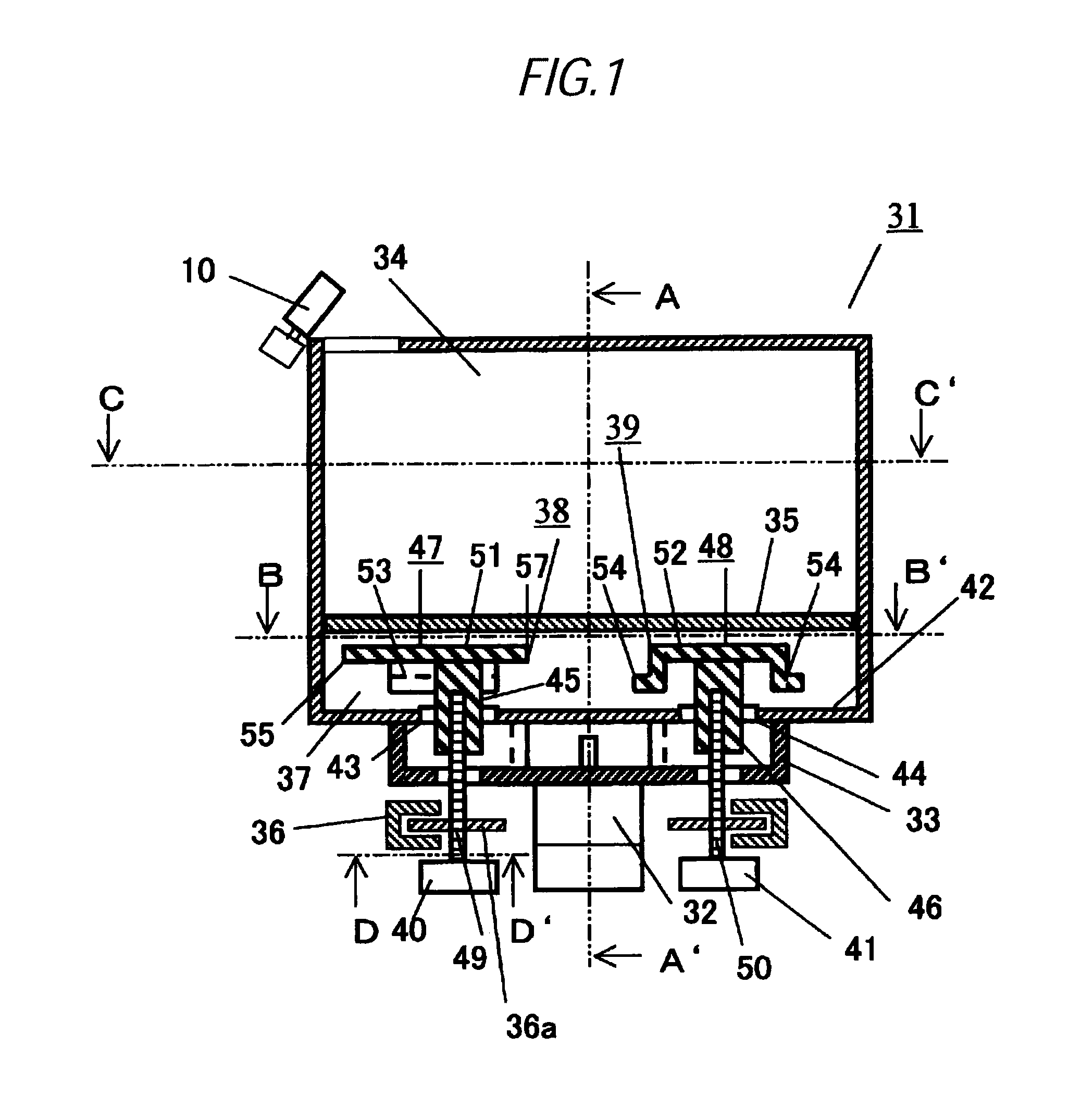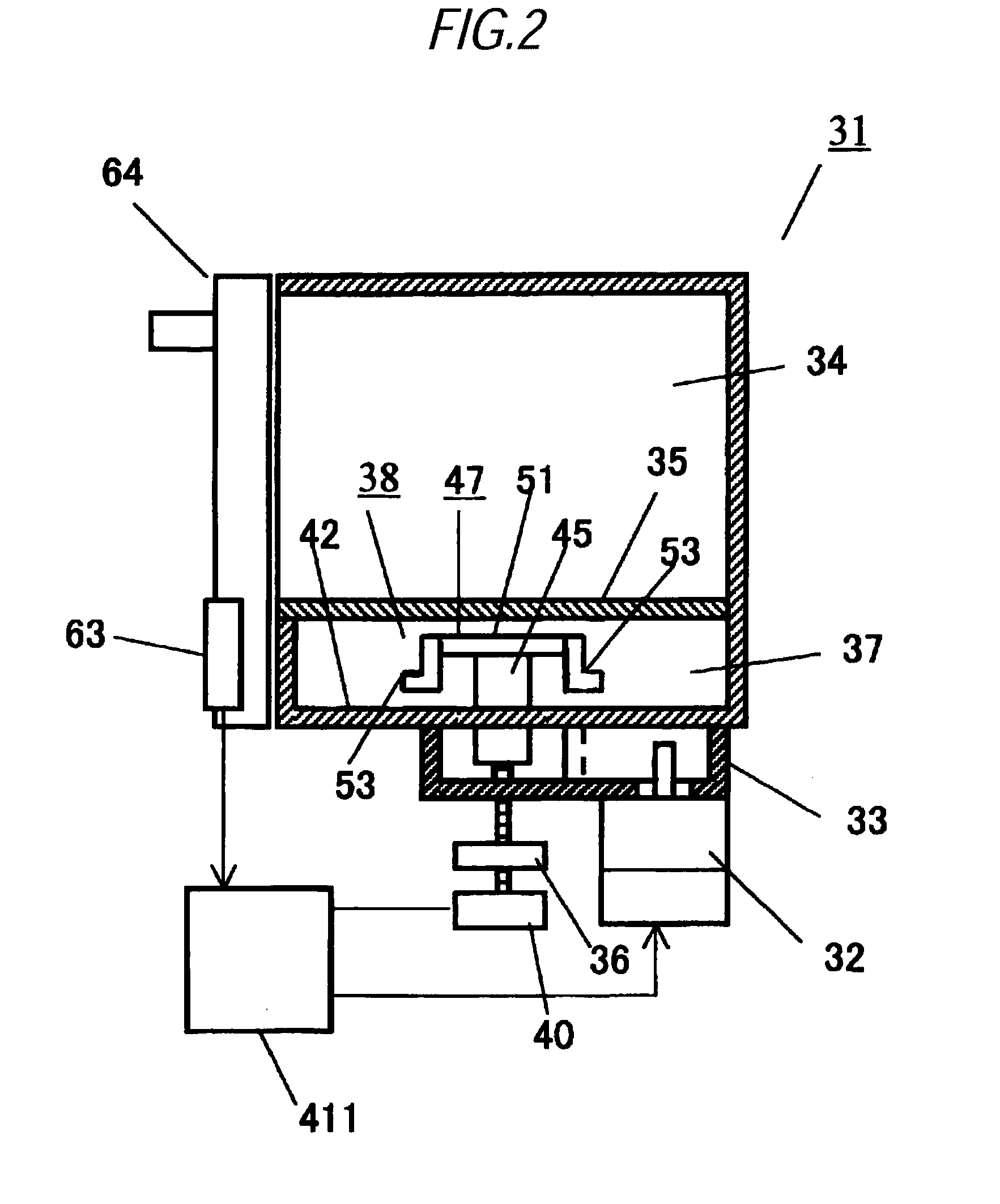Microwave heating appliance
- Summary
- Abstract
- Description
- Claims
- Application Information
AI Technical Summary
Benefits of technology
Problems solved by technology
Method used
Image
Examples
embodiment 1
[0080]FIG. 1 to FIG. 3 are configurative views of a microwave oven 31 as a typical microwave heating appliance of according to the present invention. FIG. 1 is a sectional view of the microwave oven when viewed from a front side, FIG. 2 is a sectional view of the same taken along an A-A′ line in FIG. 1, FIG. 3 is a sectional view of the same taken along a B-B′ line in FIG. 1, FIG. 4 is a sectional view of the same taken along a C-C′ line in FIG. 1.
[0081]As shown in FIG. 1, a microwave oven 31 is equipped with a waveguide 33 for transmitting a microwave radiated from a magnetron 32 as the typical microwave generating unit, a heating chamber 34 connected to an upper portion of the waveguide 33 and having a shape whose dimension in the width direction (about 410 mm) is larger than a dimension in the depth direction (about 315 mm), a loading table 35 fixed in the heating chamber 34 to load a food (not shown) as the typical heated subject thereon and formed of a low loss dielectric mater...
embodiment 2
[0155]FIG. 16 is a flowchart explaining a controlling operation in the heating feedback stage of the microwave oven of Embodiment 2 of the present invention. In following explanation, the same reference numerals are affixed to the same constituent elements as those explained above and their description will be omitted herein.
[0156]The microwave oven 31 of Embodiment 2 enters the heating feedback stage shown in FIG. 16 after the heating initial stage is ended. A difference between the heating feedback control of Embodiment 1 shown in FIG. 15 and the heating feedback control of Embodiment 2 shown in FIG. 16 resides in that the heating feedback control of Embodiment 2 classifies respective areas (A1 to A4, B1 to B4, C1 to C4, D1 to D4) in the heating chamber 34 into a center area A (B2, B3, C2, C3), a left area B (B1, C1), a right area C (B4, C4), a front area D (A2, A3), and a rear area E (D2, D3), and then executes the heating feedback based on the average temperature of the food are...
embodiment 3
[0167]As the microwave oven of Embodiment 3, a variation of the rotating antenna will be explained hereunder. In following explanation, the same reference numerals are affixed to the same constituent elements as those explained above and their description will be omitted herein. For example, as shown in FIG. 17, a circular plate-shaped antenna to a part of which an opening portion is provided may be used as the rotating antenna.
[0168]Concretely, in FIG. 17, rotating antennas 83, 84 have circular arc-like opening portions 87, 88 on radiating portions 85, 86. A length L of the opening portions 87, 88 in the width direction is set to a ¼ wave, or more of the microwave being radiated in the heating chamber. Therefore, the rotating antennas 83, 84 have the radiation directivity at the opening portion when stopped, and thus can heat locally the particular area in the heating chamber 34.
[0169]Also, as another variation of the rotating antenna, for example, as shown in FIG. 18, there are re...
PUM
 Login to View More
Login to View More Abstract
Description
Claims
Application Information
 Login to View More
Login to View More - R&D
- Intellectual Property
- Life Sciences
- Materials
- Tech Scout
- Unparalleled Data Quality
- Higher Quality Content
- 60% Fewer Hallucinations
Browse by: Latest US Patents, China's latest patents, Technical Efficacy Thesaurus, Application Domain, Technology Topic, Popular Technical Reports.
© 2025 PatSnap. All rights reserved.Legal|Privacy policy|Modern Slavery Act Transparency Statement|Sitemap|About US| Contact US: help@patsnap.com



